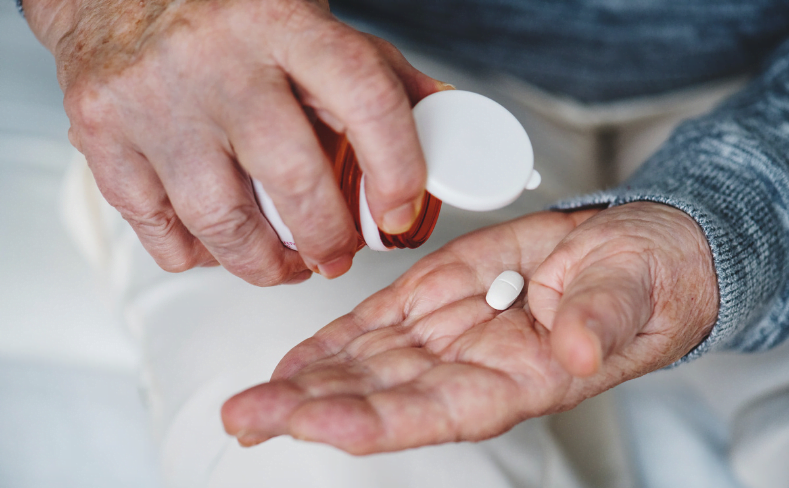On Watch: How to Spot Opioid & Opiate Addiction Symptoms
The effects of the opioid crisis in America are devastating. In fact, they can quite literally destroy lives.
It’s estimated that 115 people in the US die every day as a result of overdosing on opioids.
If you’re worried that someone you know may be caught in the clutches of opioid addiction, we’re here to help. In this article, we’ll tell you what signs to look out for, so that you can take action.
Read on to find out what the most common opiate addiction symptoms are.
Opiate Addiction Symptoms Explained
Here are the main signs of opiate abuse and how to deal with them.
Immediate Side Effects
The first thing to look out for is the immediate side effects of opiates. This way, you’ll be able to identify if someone has taken them recently.
After opiate abuse, the skin appears flushed and becomes irritable. A red, itchy face may not be cause for concern on its own, but combined with some of the following side effects, it could be.
There’s also a sense of euphoria, which can come with hallucinations and impaired judgment. Breathing can become slow and shallow as the heart rate decreases, too.
These side effects also include digestive issues such as nausea, vomiting, and constipation. If someone is taking opiates in the prescribed dosage, these effects should be minimal. However, if they occur frequently and severely, they can signal abuse or addiction.
Changes in Appearance
Opiate abuse doesn’t always create the drastic physical changes that other drugs, like methamphetamines, do. Still, they can cause a person to look very different over time.
The most noticeable way that this happens is through weight loss.
Since these drugs cause nausea, they suppress the appetite. Vomiting and constipation also mean that the body struggles to process food correctly and absorb the nutrients it needs. Over time, this can cause body weight to drop significantly.
The body can also become fatigued as a result of opiate abuse, and this leads to changes in metabolic rate. If a person doesn’t experience any other side effects, this can cause them to go in the other direction and gain weight instead.
Either way, drastic changes in weight are something to look out for.
If a user is injecting the drugs, you may also be able to notice needle marks on their arms or legs.
Physical Symptoms
There are a number of physical changes that addicts can experience, too.
These drugs can cause increased sensitivity to sensory stimuli. This means that they may become easily irritated by sounds, smells, and physical touch.
In fact, they can cause overall alertness to be dramatically increased. Someone who is using opioid regularly may seem to have increased energy levels and become hyper-vigilant about things that didn’t seem to matter to them before.
This alertness can cause the heart rate and blood pressure to rise, too.
These symptoms can also occur during opioid withdrawal. At this stage, they can be much more dangerous. In the worst cases, the danger of withdrawal can even be fatal.
Sometimes, addicts also experience blurred vision. If you notice that someone you know is complaining of these physical symptoms, look out for some of the following changes in their mood and behavior to get an idea of the bigger picture.
Psychological Symptoms
The effects of these drugs aren’t just physical. The psychological effects of opiates can also have a huge impact on the brain and mental health.
To begin with, people can experience irritability and a lack of motivation. They may stop fulfilling their responsibilities and even completely lose interest in the hobbies and activities that they used to enjoy. Eventually, they may withdraw from social interactions more and more.
There is even a link between depression and opioid use. It’s not just that they can cause it. In fact, people who suffer from depression are more susceptible to opioid addiction. This means that the effects go both ways.
They can also cause anxiety. This may appear in subtle, general ways. However, in some cases, it can lead to anxiety attacks or panic attacks.
One of the pain-killing effects of opioids is euphoria, and this is part of what makes the drugs so addictive. In severe cases, some addicts experience drug-induced psychosis, which can appear similar to the symptoms of mental health disorders like schizophrenia.
Behavioral Symptoms
Opioid addiction often starts as a harmless endeavor to seek relief from pain after surgery. As people take it more, their bodies build up a tolerance and they can start to feel as though they need more in order to get the same effects.
This is one of the ways it can change a person’s behavior. If someone is taking the drugs more frequently or in larger doses, it could be a red flag. They may seek out extra drugs by visiting multiple doctors, claiming to need replacement prescriptions, or even stealing them.
This isn’t the only way opioids can alter a person’s behavior. They can also cause changes in sleeping patterns, causing people to sleep far more or less than usual, or at completely different times to their usual routine.
They can also cause people to become more impulsive, making decisions or taking action without thinking. This can lead to risky behaviors, which can put themselves or the people around them in danger.
An opioid addict’s mood can become very volatile, and they may tend to experience rapid mood swings, seemingly going from one extreme to another.
Get Treatment
If you’ve noticed these opiate addiction symptoms in someone you know, the next step is to take action.
Thankfully, you don’t have to do it on your own.
There are plenty of options available for those who are struggling with addiction. Learn what you need to know about the variety of options by contacting (855) 976-2092. Specialist rehabilitation centers can help with interventions, providing both in-patient and out-patient services.
Therapy, workshops and group counseling, can help to tackle the root of the issue, while methadone can be used to treat the addiction itself.
To find out more, read our post on the methadone treatment success rate.
References
[1] National Institute on Drug Abuse. (2019, January). Opioid Overdose Crisis. Retrieved from DrugAbuse.Gov: https://www.drugabuse.gov/drugs-abuse/opioids/opioid-overdose-crisis [2] Kathleen Smith, P. (2018, November 25). Depression and Opioid Abuse. Retrieved from Psychom.net: https://www.psycom.net/depression.central.opioid.abuse.html [3] Purdue University. (2018, October 3). Opioid overdoses, depression linked. Retrieved from https://www.sciencedaily.com/releases/2018/10/181003162709.htm








